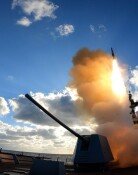Report Compares Korea Today With That in 1950s
Report Compares Korea Today With That in 1950s
Posted November. 21, 2009 20:10,
The National Statistical Office yesterday released a report comparing the countrys conditions today to those of the 1950s.
Over the past six decades, the size of national territory has expanded three percent, average temperatures have risen, and the population has rapidly aged. The report compared this years indicators with those compiled between 1952 and 1962.
The proportion of children under 15 markedly declined to 16.8 percent this year from 41.2 percent in 1955. By contrast, the proportion of those aged 65 and over tripled from 3.3 percent to 10.7 percent over the same period.
Accordingly, the index comparing the elderly population by that of children rose eightfold from eight 63.5, an indication of the countrys rapidly aging society.
Such demographic shifts have led to changes in schools. The number of students per teacher declined to 19.8 this year from 58.9 in 1956. The number of teachers grew 3.5 times from 49,600 to 175,000 over the same period, while that of students grew 1.2 times from 2.92 million to 3.47 million.
National territory grew from 96,929 square kilometers in 1954 to 100,140 square kilometers last year. A statistical office source said, Seas and rivers turned into land due to reclamation projects, adding, Coastlines have gotten straighter than in the 1950s.
South Gyeongsang Province, the largest province in Korea, occupies 19.6 percent of the nations land with 19,028 square kilometers. It had covered 18,991 square kilometers in 1954.
The annual average temperature in Seoul rose from 11.3 degrees Celsius in the 1950s to 12.9 degrees last year. That of Daegu rose from 12.5 to 14.6 degrees, the largest increase over the period. Mokpo and Yeosu in South Jeolla Province saw the lowest increase of one degree.
The report also estimated the damage inflicted by the Korea War. The number of deaths was 990,000 and property damage reached 41.06 billion won (35.4 million U.S. dollars), or 18.29 billion won (15.8 million dollars) in damage to buildings, 22.09 billion won (19.1 million dollars) in loss of assets and facility damage, and 680 million won (586,200 dollars) in livestock damage.
lovesong@donga.com







